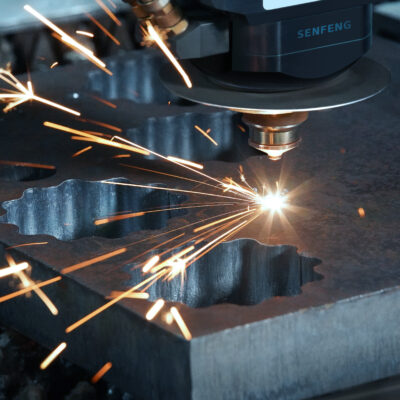In the realm of industrial laser cutting, laser power rating plays a pivotal role in determining the machine’s capabilities and efficiency. Laser cutting machines are commonly available in 3kW, 4kW, 6kW and other higher powers (even 80kW in SENFENG at most), each catering to different operational needs and material thicknesses. This article will delve into a comparative analysis of top three relatively popular power levels to help you understand their respective strengths and applications.

I. Laser Power Rating
Laser power is a crucial factor influencing the cutting speed, precision and versatility of a laser cutting machine. It directly impacts the machine’s ability to process metal materials and thicknesses efficiently. Higher power rating generally allows for faster cutting speed and the stronger ability to cut through thicker materials.
3kW: A 3kW laser cutter is suited for moderate industrial applications. It can effectively cut through materials such as stainless steel, mild steel, aluminum alloy, brass and red copper up to a certain thickness. The cutting speed is generally good for thinner materials, offering a balance between work speed and power consumption.
4kW: Stepping up to 4kW increases cutting capabilities significantly. This power rating is ideal for thicker materials and brings about faster cutting speed compared to a 3kW machine. It enhances productivity and is suitable for handling a broader range of materials across various industries.
6kW: At 6kW, laser cutting machine achieves high level of power and cutting speed. These machines are capable of cutting through thick materials swiftly, making them highly efficient for heavy-duty industrial applications. They excel in handling with thick metals and achieving high throughput.

II. Cutting Speed and Efficiency
The primary advantage of higher laser power is its impact on cutting speed. A 6kW laser cutter can cut metals much faster than a 3kW or 4kW machine, which is advantageous in high-volume production. For instance, cutting 1 inch thick stainless steel with a 6kW machine may be significantly faster than with 3kW due to the increased power density.

III. Thickness Range and Material Compatibility
3kW: Typically suitable for materials up to 0.83 inch (20mm) thick, depending on material type. It works well with thinner materials and is often used in industries requiring high-precision cutting at moderate speed.
4kW: Capable of cutting thicker materials up to 1.04 inches (25mm), depending on material type. It expands the range of applications to include medium-thick materials while maintaining good cutting speed.
6kW: Excels in cutting thick materials up to 1.25 inches (30mm), depending on materials type and quality. It is favored for heavy-duty applications where speed and power are critical.

IV. Energy Consumption and Operating Costs
Energy consumption increases with higher laser power rating. A 6kW laser cutter will consume more energy per hour compared to a 3kW machine, which translates to higher operating costs. However, this is often offset by the increased productivity and efficiency gained from faster cutting speed and thicker materials in fewer passes.
SENFENG’s Cutting Ability of 3kW, 4kW and 6kW
| Laser power | Max thickness of sheet | Max speed of cutting sheet | Max thickness of tube | Max speed of cutting tube | Total operating costs (O2) |
| 3kW | 20mm | 30-45m/min | 12mm | 25-35m/min | 18.2RMB/kWh |
| 4kW | 25mm | 40-50m/min | 12mm | 25-35m/min | 22.1RMB/kWh |
| 6kW | 30mm | 45-55m/min | 18mm | 30-45m/min | 24.6RMB/kWh |
V. Precision and Edge Quality
While higher power laser generally offers faster cutting speed, it can also affect cutting precision and edge quality. However, advancements in laser technology and cutting control systems mitigate these concerns to a large extent. Modern laser cutting machines, regardless of power rating, can achieve high precision and excellent edge quality, provided they are properly maintained and operated.
VI. Application Considerations
Choosing the right laser power depends on specific application requirements:
Prototyping and Fine Cutting: A 3kW laser may suffice for industries focusing on intricate design and thinner materials.
Medium-scale Production: A 4kW laser is suitable for industries requiring versatility across various material thicknesses without compromising on speed.
Heavy-duty Manufacturing: A 6kW laser is optimal for industries needing high throughput and the ability to cut thick materials efficiently.

VII. Conclusion
In conclusion, the choice among 3kW, 4kW, 6kW laser cutting machine depends on your specific operational needs, material thicknesses and production volume. Higher power rating offers faster cutting speed and higher ability to handle thicker materials, albeit at higher operational costs. Understanding these differences empowers you to make an informed decision based on your industry requirements and budget considerations. For more detailed consultation regarding laser cutting ability, please reach out to our technical experts who can provide tailored advice based on your specific needs.
By comparing the cutting ability of 3kW, 4kW and 6kW laser cutting machines, you gain insight into how these power rating affects cutting performance, efficiency and overall productivity in industrial settings.

